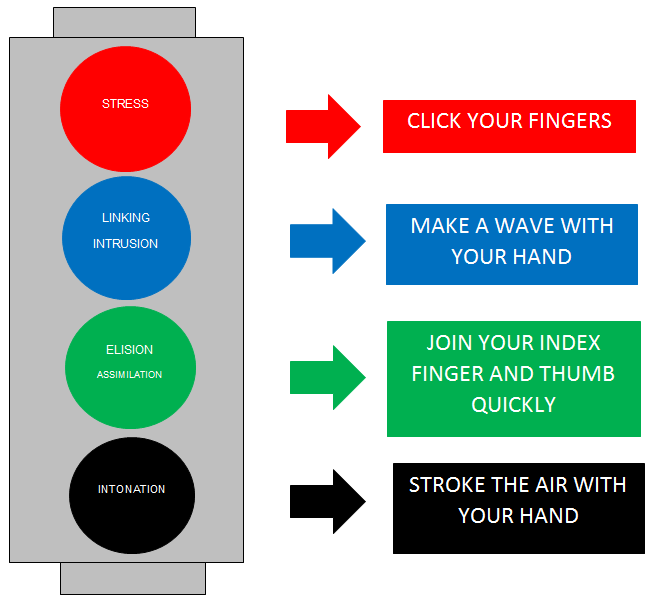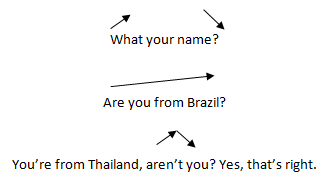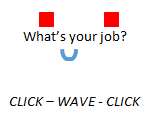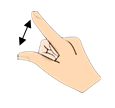 In this guest post, Arizio Sweeting, a Cambridge ESOL Oral Examiner, shares his tips for using colours and hand signals to help learners grasp pronunciation.
In this guest post, Arizio Sweeting, a Cambridge ESOL Oral Examiner, shares his tips for using colours and hand signals to help learners grasp pronunciation.
To teach or not to teach pronunciation? That’s the question. As paradoxical as this question may be, the answer for it should be simple: pronunciation is communication, and thus, worthy of attention in the language classroom. As an advocate for the teaching of connected speech, I am always looking for ways of raising my learners’ awareness of this productive capacity of spoken language.
In this post, I would like to share a colour-coding system I have been using with my learners to help them focus on prosodic features such as stress, elision, assimilation, linking and intonation. I have called it, Traffic Lights.
The rationale
Traffic lights are useful signals, so I thought they would be a helpful aid to guide my learners in their journey of discovery about connected speech. The Traffic Lights system is also supported by hand gestures such as finger clicking, hand waves, hand strokes and finger to thumb movements, which I believe help learners to relax rather than worrying too much about trying to work out what is happening in the mouth in order to allow themselves to enjoy the pronunciation practice via a more active and kinaesthetic approach.
Understandably, articulation exercises tend to focus too much on the ear and the mouth at times. However, for many learners this experience is rather daunting and unpleasant. By giving them an opportunity to visualise and cognitively shift the focus of the brain away from these body ‘instruments’, they stand a better chance of visualising and thus becoming more attune to natural speech. While observing my learners in action in the classroom, I have noticed some clear improvement in their ability to speak more intelligibly, even though their initial reactions to the approach being reserved.
The preparation
At the beginning of your course, introduce the learners to the systems. For this, the learners will need to have a four-colour pen and a copy of the Traffic Lights card below (which I like to laminate for them).

Ask the learners to attach this card to their file, as they will need to refer to it on a regular basis during the course.
The application
Start by showing the learners some functional language for introductions of your choice. Here are some common get-to-know-each other questions:

First, get the learners to use the red ink in their pen to mark the STRESS in the language above e.g.

Encourage the learners to analyse this language in pairs or small groups. Monitor and assist where necessary.
Then, focus the learners on LINKING. For this, get the learners to use the blue ink in their pen to join the final sounds of words with the initial sounds of other words e.g.
![]()
Tell the learners that, in general, linking is a rather complex and variable aspect of connected speech. For this reason, they should look for CONSONANT + VOWEL linking as in the example above, or the intrusion of an extra sound to make speech more natural e.g.

After that, work on ELISION and ASSIMILATION. Tell the class that these aspects of connected speech are somewhat similar, which can be a bit confusing at times. Highlight that ELISION is the omission of sounds while ASSIMILATION, the change of sounds towards a neighbouring sound in fast speech. Exemplify these and get them to identify more instances in the language samples using the green ink in their pen like this:

Now draw learners’ attention to INTONATION. Using the conventional arrows, get the learners to mark the RISE and FALL patterns, as well as their combinations, in black ink, like this:

Gestures come in handy
With the Traffic Lights system introduced, tell the learners that they’re going to combine sound and hand gestures to practise the different pronunciation features. After all, the hands are a driver’s best friend!
Start by working on STRESS.
 Tell the learners that they should click their fingers to mark the stress in the language samples, as they read them aloud. Demonstrate what to do first.
Tell the learners that they should click their fingers to mark the stress in the language samples, as they read them aloud. Demonstrate what to do first.
Move on to linking or intrusion next. For this, the learners get the learners to make waves with their hands to show the linking sounds. Once again, demonstrate this to the class.
Then, get the learners to combine both ‘clicks’ and ‘waves’ to read the language samples. For example, in the question below, the hand sequence should be:

Make sure the learners focus on the red and blue colours only at this stage. Allow them time to practise all the language with one another, but intervene to correct whenever necessary.
Then, focus the learners on the intonation patterns i.e. on the black arrows. For this, the learners need to use hand strokes to mark the direction of their voice. The learners should stroke the air either upwards or downwards depending whether they think their voice should be going down or up on the samples.
It is important that you assist here so that everyone have a referential to work with. Besides, it may be an idea to raise their awareness how intonation works with YES and NO questions, WH-questions, question tags and so on.
Get the learners to combine hand gestures again. For instance, they could use waves and strokes to practise linking and intonation together, or strokes and clicks for intonation and stress.
Please note that trying to combine more than two gestures can be rather difficult for the learners to manage.
 When working with ELISION and ASSIMILATION, encourage the learners to join their index finger and thumb quickly to indicate these forms. Although the gesturing may not clearly represent the assimilated sound, at least it will help the learners to work on some kind of juncture, which is always a good thing.
When working with ELISION and ASSIMILATION, encourage the learners to join their index finger and thumb quickly to indicate these forms. Although the gesturing may not clearly represent the assimilated sound, at least it will help the learners to work on some kind of juncture, which is always a good thing.
Again, get the learners to practise these aspects of connected speech with their hands and then encourage them to combine these with other ones e.g. stress and elision.
One consideration to make is that ELISION can also occur within a word (e.g. sandwich). However, I recommend that you focus on it between groups of words so they can identify it more clearly during the practice.
Putting it all into practice
Finally, the learners are now ready for the speaking practice. Ask them to mingle and get to know each other. Encourage them to use their hand gestures whenever they feel that there has been a break-down in communication because of their pronunciation.
From L- to P- plates
When the practice is finished, ask learners to keep the Traffic Lights card in their bag, as you will use it regularly during the course. I like to do short burst of pronunciation every day in my own classroom. For instance, before getting the learners to discuss some lead-in questions to a reading passage, I find it very beneficial to use that moment for focusing the class on either a red, blue, green or black aspect of connected speech so that they can go from an L-plate to a P-plate in no time.


Reblogged this on LIFESTYLE and commented:
Interesting ideas…
This sounds fantastic.
Thanks, marinakop. Let me know if it works with your learners too.
[…] […]
Good explanation….. Could show us your short video ?
I really want to try. Unfortunately, I cannot do. I need to watch real example, to make the same way.
Could you ?
I’m considering putting a video together for this. Will let you know.
that’s a great idea, thank you so much for sharing! it looks like something very structured and easy for the students to grasp and to get used to!
Svetlana
[…] In this guest post, Arizio Sweeting, a Cambridge ESOL Oral Examiner, shares his tips for using colours and hand signals to help learners grasp pronunciation. To teach or not to teach pronunciation?… […]
[…] In this guest post, Arizio Sweeting, a Cambridge ESOL Oral Examiner, shares his tips for using colours and hand signals to help learners grasp pronunciation. To teach or not to teach pronunciation? That’s the question. […]